Summit enables the sharing of progress in the MENA region, writes Surendar Balakrishnan, Editor, Climate Control Middle East
The MENA Retrofit Tech Summit and Awards 2022, on March 22 and 23, in Dubai, presented a broad annual report card on building-retrofit activities in the MENA region and, at the same time, enabled the sharing of specific details that highlighted energy and water savings, amongst other sustainable development benefits.
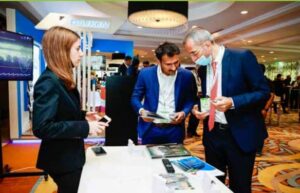
Faisal Rashid, Senior Director, Demand Side Management, Dubai Supreme Council of Energy, for instance, gave a broad perspective on Dubai’s initiatives. Speaking after him, his colleague, Graeme Sims, Executive Director – RSB Dubai, presented a granular view, highlighting the progress the Bureau has made in regulating district cooling in Dubai.
In the past year, Sims said, the Bureau has been putting flesh on the bones of the regulatory framework.
The RSB is a regulatory body for energy and water, and for private sector involvement and licencing of power projects. It has licenced over 5,000 MW of power projects, with a majority of them being solar projects. It was given the responsibility of regulating the district cooling sector relatively recently. Sims said the Bureau had been working on the district cooling sector for a good few years before being given the responsibility of regulating it.
He said the team at the Bureau realised it would be successful in regulating district cooling and being able to see its full economic potential only if three stakeholders came on board: District cooling providers; customers, who will want to occupy only if they see value of money in quality and service and cost; and developers, who choose district cooling as their cooling options, as marketable to potential property buyers.
Sims enumerated what he called as six areas of focus of the regulation…
1) Contracted capacity
2) Tariffs, fee and charges, which tend to sit at the heart of any regulatory regime
3) Contracts
4) Complaints handling
5) Energy and water efficiency
6) Customers in arrears
The protection of customers, he said, is at the heart of the regulation.
Speaking on the specific work to date, Sims said the Bureau is collecting data from billing agents, has established health and safety regulations and is finalising procedures for customers in arrears.
The work still in development, he said, includes cooling services agreement for supply to buildings, and the standards for establishing contracted loads.
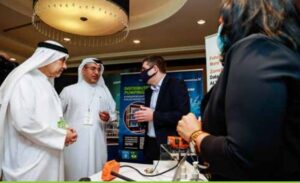
Sims said cooling projects have offered superior performance in terms of payback. “All ECMs have been fairly steady over the year, but cooling projects perform better than average, with a payback period of 2½ years,” he said. “Lighting, on the other hand, has a payback of 4½ years. So, cooling projects retrofit is feasible.”
Later, Dr Pablo Izquierdo, Manager, Energy Services Section, Reem, Ras Al Khaimah Municipality, presented an overview of retrofitting activity in Ras Al Khaimah.
Speaking specifically on the Municipality’s Building Retrofits program, one of the key pillars of the Ras Al Khaimah Energy Efficiency & Renewable Energy Strategy 2040, he said it addresses the main building types, with the initial focus being on government buildings and gradually extending to commercial and residential segments. In all, he said, the Municipality is targeting 3,000 buildings for retrofitting by 2040, with an investment of AED 500 million.
Dr Izquierdo spoke of how it is more difficult to tackle the residential segment and added the Municipality is determined to target doing a few of that sector. Overall, he described the governmental initiative as being ambitious in scale.
Elaborating on the specifics of the programme, Dr Izquierdo spoke of how it is supported by eight enablers. The first of these, he said, is the resolution for energy audits and retrofits. The second enabler is a Super ESCO, which facilitates retrofit projects and related activities. The third enabler is awareness building to generate interest in retrofit projects, and the fourth is M&V and reporting, which Dr Izquierdo said established measurement and verification standards and a reporting mechanism to collect information on completed projects.
The fifth enabler is the accreditation of ESCOs. Dr Izquierdo said the Municipality had accredited 22 ESCOs by the end of 2021. The sixth enabler is incentives for ESCOs and auditing firms to set up their practice in Ras Al Khaimah and develop the retrofit market. The seventh enabler, Dr Izquierdo said, is the creation of standard processes and tools for the efficient management of retrofit projects. And the eighth enabler, he said, is establishment of standard templates for contracts and tender documents. “So, we have a good ecosystem of companies and activities,” Dr Izquierdo said. “And of the 3,000 buildings by the 2040 target, we have done 150 buildings so far.”
Dr Izquierdo said the building retrofits programme of Ras Al Khaimah is interesting, because it involves the active participation by the government and is driven by a resolution mandating minimum energy and water savings and because it has a Super ESCO in place, with the role of a facilitator, which ensures smooth completion of retrofit projects. It is interesting, because it also has a simplified tendering process, he said.
The program is also integrated with an energy management process, which supports continuous improvement. Further, group financing methods have been adopted to ensure scale, he said. Also, the programme has involved the developing of incentives on the demand side and the supply side, to encourage adoption of retrofit projects and supply developments, such as financial incentives and set-up incentives.
Speaking on the role of the Super ESCO, he said it is based on a spirit of collaboration. “We are technical advisors,” he said. “We are not contracting parties. We do not sign contracts. We provide technical advice. The customer signs an energy performance contract, and the ESCO does the investment-grade audit, the retrofit project work, and the operations and maintenance. We help them with initial energy audit and contracting support.”
Dr Izquierdo said the Municipality has executed retrofit projects since 2018. In 2020, it made its foray into the education sector, where it implemented retrofitting – including energy conservation measures – in 15 school buildings, overall comprising over 20,000 square metres and spread across four locations, under a guaranteed savings contract of five years.
The entire project involving the schools had innovation as its backbone. For instance, to minimise costs and payback times, some chillers were relocated from one school to another, Dr Izquierdo said. Further an ML algorithm is used to optimise the operation of chiller plants in the schools, he said. Multiple sensors provide information to the chiller plant manager, which continuously optimises the chillers, pumps and valves to maximise the efficiency of the plant, considering outdoor climatic conditions, he said, adding that cloud-based intelligent controls manage demand based on occupancy and work schedules, and connected smart meters allow central monitoring. “We have centrally monitored meters,” he said. “We can see exactly what is being consumed.”
Dr Izquierdo said the energy savings in the schools is not owing to any behavioural change involving the students. “Kids are mostly unaware of what’s going on,” he said. “No one is being told to save energy. It is more of a technical achievement that is resulting in greater savings.”
Face to face
Panel discussion, titled ‘Regulatory and Super ESCO outlook on incentivising retrofits and enhancing energy and water efficiency in buildings’ provides an interesting insight into MENA retrofit activity…
HASSAN YOUNES: The past year has been interesting in the energy space, with the UAE announcing a net-zero target by 2050, and the next two global COPs scheduled to take place in the MENA region. Is it difficult to achieve net-zero energy in the region, which is characterised by high temperatures and high humidity?
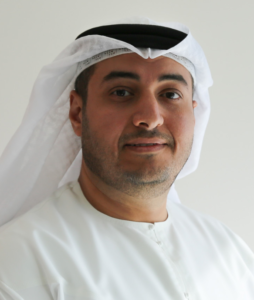
Ramiz Hamdan Alaileh
RAMIZ HAMDAN ALAILEH: From an Abu Dhabi’s perspective, the Department of Energy is the policy-maker, regulator and custodian for the mandate of Abu Dhabi emirate. Focusing on retrofit, in particular, there is regulation with regard to new products. We have recently announced a government retrofit programme and are focusing on 39 buildings. The aim is to achieve 30% savings in energy.
The Abu Dhabi Super ESCO has announced a lot of projects with UAE University, and the Department of Culture and Tourism. What is unique is that we have a vast range of projects, including schools; health facilities, especially after COVID-19; and a cultural landmark fort in Al Ain. We are also working with one of the major real estate developers, Aldar. We want to achieve 20% savings in eight of their facilities.
The Department of Energy’s focus is on driving energy and water efficiency and developing the right guidelines. The Department is not only focusing on energy and water but also all aspects of society and long-lasting change.
YOUNES: Engr Faisal Rashid, could you please highlight the main initiatives and emphasise on the ones with the most impact in Dubai in the next few years?
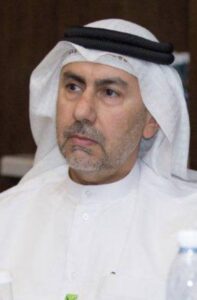
Faisal Rashid
FAISAL RASHID: I can speak only from a macro level. The UAE government has pledged to achieve net-zero carbon by 2050, and Dubai has aligned with NDCs (Nationally Determined Contributions), in line with the Paris Agreement. And within, we have an ongoing programme in terms of supply and demand, where supply side share of renewable energy is set to increase. All the premature piloted projects are being tried, and the more mature projects, like solar, electric vehicles and CSP (concentrated solar power) are being scaled and going to different levels.
Solar and green transport will represent 50% of next-zero target, and the other 50% will be from other sectors, such as shipping, aviation and manufacturing. And we need to use different approaches, like green hydrogen, and carbon capture and storage.
We have a platform for district cooling, and the objective is to increase the penetration of district cooling in Dubai and to increase the standard of efficiency within the plant. And we also have an FM platform to promote FM operation within buildings. Also, recently, we launched a circular economy initiative.
YOUNES: Said, could we have your insight?
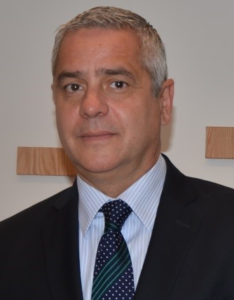
Said Mouline
SAID MOULINE: We are focusing on decarbonisation of industry. It is urgent because carbon tax is underway in 2023 in Europe, and it is important that mining, steel and cement industries align themselves on how to decarbonise, and we are helping them in different fields. In Morocco, 88% of electricity is coming from renewables. There are many wind parks in the country. And heat from the fertiliser industry is being used in desalination process.
We believe in green hydrogen projects, and we can produce green hydrogen. Wind is highly appealing. The cost is 2-3 cents per kWh from the wind sector, so it is the cheapest way to produce electricity.
YOUNES: Andrea, could you share Ras Al Khaimah’s initiatives?
ANDREA DI GREGORIO: In 2018, RAK introduced the Energy Efficiency & Renewable Energy Strategy 2040, and most programmes under it were introduced in 12-18 months. We are at a stage where the programme is giving concrete results. By the end of 2022, we expect several 1,000 buildings to be built according to the new regulation. The UAE’s net-zero target by 2050 is a remarkable commitment, and it requires all territories in the UAE to rethink our strategy and upgrade our efforts. The RAK programmes involve depth and breadth of intervention. Depth includes savings for current participants in the retrofit programme, and breadth means more customers. These are platforms that are meant to upgrade savings, and more will come as a federal strategy.
YOUNES: Faisal Al Raisi, we would like to hear from you.
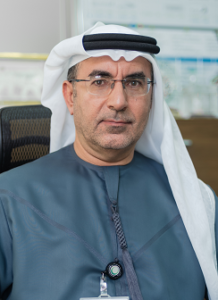
Faisal Al Raisi
AL RAISI: Etihad ESCO aims to retrofit 30,000 buildings by 2030. We still have a long way to go, and Etihad ESCO is there to support local and international ESCO businesses; and last year, we succeeded. We focused on majority of stakeholders that act as master developers. We entered into a collaboration agreement with DP World, and they have introduced 30 different projects in various different setups in DP World. As Etihad ESCO, we signed up with DMCC for their own setup and sub-developer properties in DMCC. We also signed up with KHDA, involving about 50 schools, and we are going to tackle those schools.
We are working with various different ministries within the UAE with assets all over the UAE. For instance, the Ministry of Interior is in charge of Civil Defence, and we will be signing with their assets in Dubai, and as we go, to the other parts of the country. We are cooperating with the Ministry of Energy and Infrastructure to support the Ministry with our energy retrofit, so that they can focus on their core work.
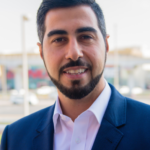
Hassan Younes
YOUNES: A key piece of the puzzle in net zero is the private sector’s support. While there are inherent benefits from energy retrofit, the payback is 3, 4 or 5 years. In the case of net-zero, we are perhaps talking of longer payback periods. What incentives do you have for private sector retrofits, and how can we involve ESCOs, consultants and manufacturers and push through the barriers to have more net-zero projects?
RASHID: It is very significant to know that monetised grant is not very popular. Subsidy has short benefits, and then when stopped, it will basically have negative impact on the initiative itself. If we look at the balance sheet of any organisation, the electricity cost is 20- 30%. Dubai Airport engaged with Etihad ESCO and a short payback period, and they benefitted. The benefit of a single retrofit project is not just one year but will continue for years to come.
The more you delay energy efficiency measures within building, the more will be the losses down the road. The other aspect is social responsibility. Reducing the carbon footprint is key in assets, and also the energy intensity. So, these are some of the benefits for the private sector.
YOUNES: Ramiz, within your role in the Department of Electricity, how can we push the private sector?
ALAILEH: We can incentivise the private sector in a number of ways, and we look at it from that perspective. As part of DSM strategy 2030, we have street lighting projects which have been initiated with the power sector in the government. We are able to attract investors and are able to deliver these projects.
AL RAISI: The private sector asked, ‘How much is it going to cost?’ Clients will not have to worry about capex and opex, and I am guaranteeing savings as Etihad ESCO. So, what’s the catch? There is no catch. Incentivising and supporting the private sectors include different hotel operators and private residential developers, as well.
YOUNES: Andrea, from your point of view and that of Ras Al Khaimah, how do you engage the private sector?
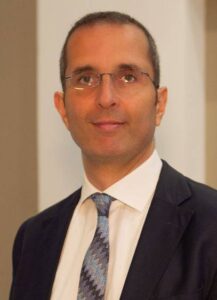
Andrea Di Gregorio
DI GREGORIO: It is a very relevant question. After engaging government customers, it is relevant to expand to the private sector. We have two types of incentives – one for ESCOs, in terms of set-up support and elimination of set-up fees, and the other for renewable energy companies, in terms of non-financial incentives and simplified procurement processes.
On demand side incentives, we are trying to come up with an energy rating scheme. Is this enough? I don’t think so. Around the world, countries that are successful in retrofits – such as in Europe – offer 100% incentives. Ninety-five per cent of the costs will be returned in the next 10 years in terms of tax rebates, as is the case with my house in Italy. Another is mandates. In UK, there are mandatory requirements, if the owner wants to rent the apartment.
YOUNES: We need to think of other ways to get to that target. In Morocco, how are you pushing for deep retrofits?
MOULINE: For PPP, you need confidence, you need transparency in contract and governance. And if you want decarbonisation, the payback may not be 5 years, but 7-10 years, so we need transparency and also governance.
Copyright © 2006-2025 - CPI Industry. All rights reserved.